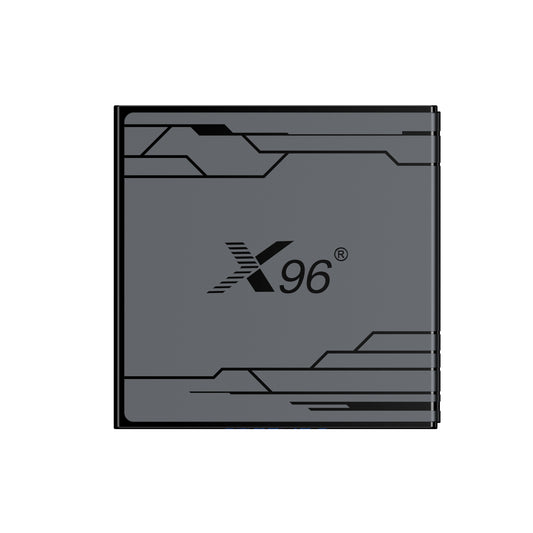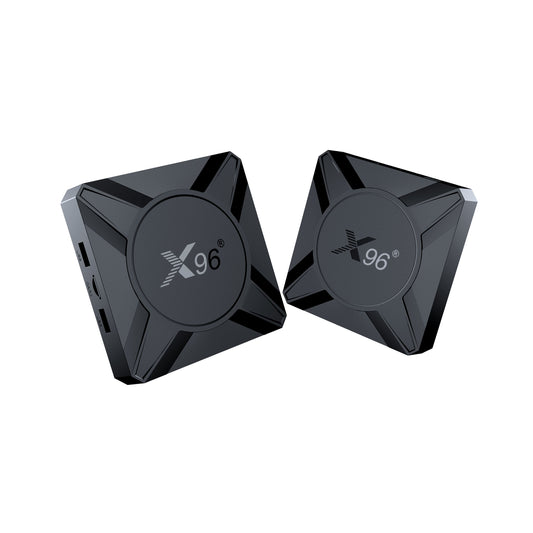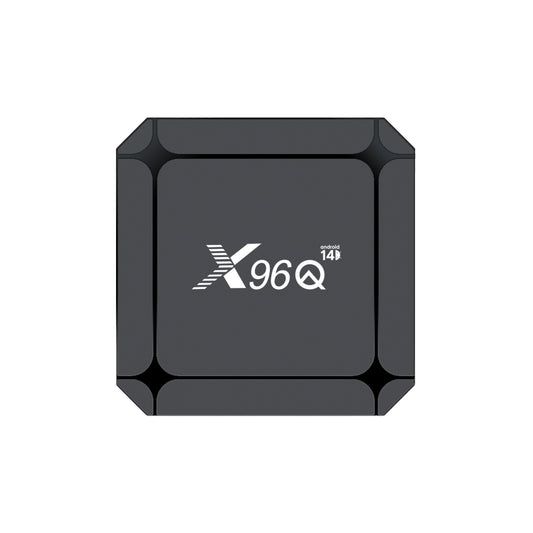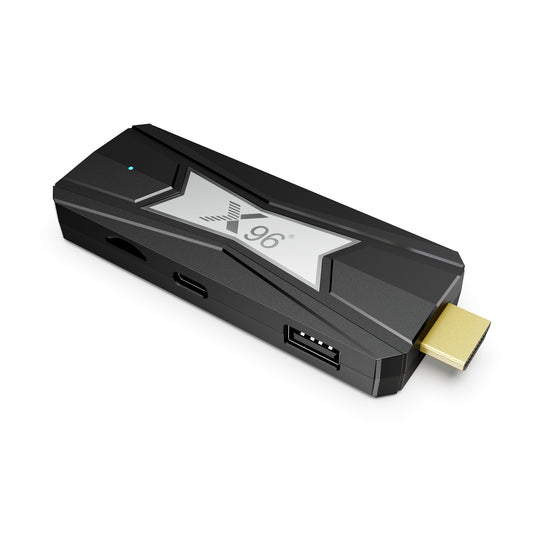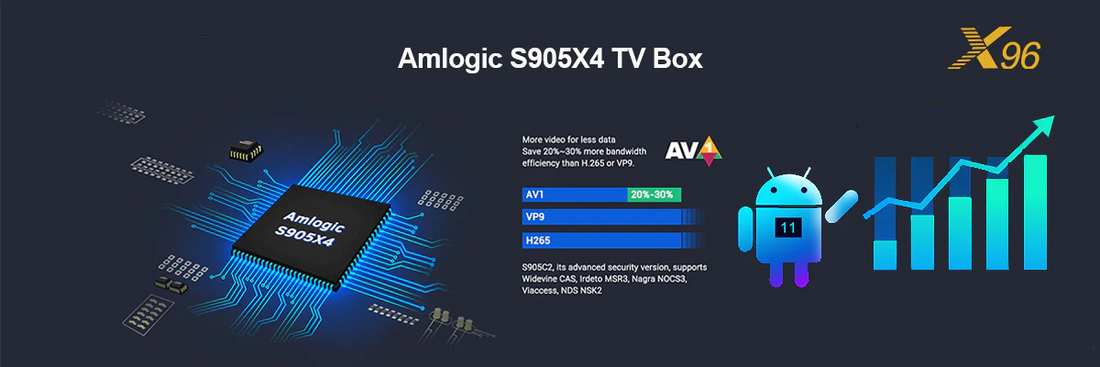
Amlogic S905X4 VS RK3528 RK3566 S905X3 S905y4 H618 S905w2 Android/Linux Armbian TV Box
At present, Amlogic S905X4 has become a popular choice for developers and users due to its powerful performance and versatility, supporting S905X4 Android and s905x4 Linux Armbian environments. In this blog post, we will conduct a comprehensive analysis through Amlogic S905X4 VS RK3528, RK3566, S905X3, S905Y4, H618 and S905W2. Whether you are developing a high-performance media streaming device or an efficient IoT solution, this guide will provide you with the insights you need to make an informed decision.
1. Amlogic S905X4

The Amlogic S905X4 is positioned as a powerful SoC in the field of digital media and IoT device architecture, with advanced media streaming, smart TV integration, and a powerful feature set tailored for the rapidly growing IoT sector. From a technical perspective, the SoC consists of a quad-core ARM Cortex-A55 CPU cluster and an ARM Mali-G31 MP2 GPU, which together provide a high-performance envelope with multiple features for media applications.
In terms of development infrastructure, the S905X4 is supported by a comprehensive set of tools designed to simplify the development process, including an integrated development environment (IDE), a software development kit (SDK), as well as customized firmware and extensive documentation to accelerate application development and deployment.
In addition, the SoC's software support framework is very strong and compatible with many operating systems commonly used in embedded systems, including Android and Linux-based platforms. This, coupled with its vibrant community and continued contributions to open source projects, makes the S905X4 an excellent choice for developers seeking a versatile and powerful chipset that can drive a wide range of multimedia and IoT innovations.
2.Amlogic s905x4 specs
This Amlogic s905x4 specs table encapsulates the key specifications of the Amlogic S905X4, highlighting its capabilities and features for various applications in TV boxes and embedded systems.
| Amlogic s905x4 specs | |
| Specification | Details |
| Chipset | Amlogic S905X4 |
| CPU | Quad-core ARM Cortex-A55 |
| GPU | ARM Mali-G31 MP2 |
| Memory | DDR3/DDR4/LPDDR4/LPDDR4X |
| Storage | eMMC 5.1, NAND flash, SD card |
| Video Decoding | 4K@60fps, AV1, H.265(HEVC), VP9, H.264 |
| Video Encoding | 1080p@60fps, H.264 |
| Audio | Dolby Digital, DTS, AAC, MP3, OGG, FLAC |
| Display | HDMI 2.1, up to 4K@60fps, HDR10+, HLG, Dolby Vision |
| Connectivity | USB 3.0, USB 2.0, Ethernet, Wi-Fi 5 (802.11ac), Bluetooth 4.2 |
| Operating System | Android, Linux (Armbian) |
| Security | Secure boot, Trusted Execution Environment (TEE) |
| Power Management | Advanced power management and thermal control |
| Other Features | 3D graphics acceleration, OpenGL ES 3.2, Vulkan 1.1, OpenCL 2.0 |
3.Amlogic S905X4 Development Tools and Environment
S905X4 SDK and Documentation:
Amlogic provides a comprehensive SDK that includes drivers, libraries, and sample code to help developers get started quickly.
Detailed documentation is available, covering everything from hardware specifications to software APIs.
S905X4 Operating Systems:
S905X4 Android: The S905X4 is fully compatible with Android, making it easy to develop and deploy Android-based applications.
S905X4 Linux Armbian: Support for various Linux distributions, including Ubuntu and Yocto, is available, catering to developers who prefer open-source environments.
S905X4 Development Boards:
Numerous development boards and reference designs are available from Amlogic and third-party vendors, providing a ready-to-use platform for prototyping and development.
S905X4 Integrated Development Environments (IDEs):
Popular IDEs such as Android Studio, Eclipse, and Visual Studio Code can be used for software development, offering a familiar environment for developers.
Amlogic S905X4 Software Support
- Middleware and Frameworks:
Support for popular multimedia frameworks like GStreamer, FFmpeg, and Kodi ensures that developers can leverage existing libraries for media applications.
IoT frameworks such as AWS IoT, Google Cloud IoT, and Azure IoT are also supported, facilitating the development of connected devices.
- Machine Learning:
The Mali-G31 GPU supports machine learning frameworks like TensorFlow Lite and Arm NN, enabling the development of AI and ML applications.
- Security:
The S905X4 includes hardware security features such as Secure Boot, TrustZone, and DRM support, ensuring that applications can meet stringent security requirements.
S905X4 Use Cases and Applications
- Media Streaming Devices:
The S905X4's robust video decoding capabilities and support for high dynamic range (HDR) make it ideal for developing high-performance media streaming devices and smart TVs.
- Smart Home and IoT:
With its extensive connectivity options and support for IoT frameworks, the S905X4 is well-suited for smart home devices, gateways, and other IoT applications.
- Gaming Consoles:
The combination of a powerful CPU and capable GPU allows for the development of casual gaming consoles and handheld gaming devices.
- AI and ML Applications:
The support for machine learning frameworks and hardware acceleration makes the S905X4 a good choice for developing AI-driven applications such as facial recognition, object detection, and voice assistants.
4.rk3528 vs s905x4,rk3566 vs s905x4,s905x3 vs s905x4,s905x4 vs s905y4,h618 vs s905x4,s905x4 vs s905w2
This section contains a comparison of configuration tables and a detailed comparison of programming development.
| Specification | Amlogic S905X4 | RK3528 | RK3566 | S905X3 | S905Y4 | Allwinner H618 | Amlogic S905W2 |
| CPU | Quad-core ARM Cortex-A55 | Quad-core ARM Cortex-A53 | Quad-core ARM Cortex-A55 | Quad-core ARM Cortex-A55 | Quad Core ARM Cortex-A35 cores | Quad-core ARM Cortex-A53 | Quad-core ARM Cortex-A35 |
| GPU | ARM Mali-G31 MP2 | ARM Mali-450 | ARM Mali-G52 | ARM Mali-G31 MP2 | ARM Mali-G31 MP2 | ARM Mali-G31 MP2 | ARM Mali-G31 MP2 |
| Memory | DDR3/DDR4/LPDDR4/LPDDR4X | DDR3/DDR4 | DDR3/DDR4/LPDDR4 | DDR3/DDR4 | DDR3/DDR4 | DDR3/DDR4 | DDR3/DDR4 |
| Storage | eMMC 5.1, NAND flash, SD card | eMMC, NAND flash, SD card | eMMC, NAND flash, SD card | eMMC 5.0, NAND flash, SD card | eMMC 5.0, NAND flash, SD card | eMMC, NAND flash, SD card | eMMC, NAND flash, SD card |
| Video Decoding | 4K@60fps, AV1, H.265(HEVC), VP9, H.264 | 4K@60fps, H.265(HEVC), VP9, H.264 | 4K@60fps, H.265(HEVC), VP9, H.264 | 4K@60fps, H.265(HEVC), VP9, H.264 | 4K@60fps, H.265(HEVC), VP9, H.264 | 4K@60fps, H.265(HEVC), VP9, H.264 | 4K@30fps, H.265(HEVC), VP9, H.264 |
| Video Encoding | 1080p@60fps, H.264 | 1080p@60fps, H.264 | 1080p@60fps, H.264 | 1080p@60fps, H.264 | 1080p@60fps, H.264 | 1080p@60fps, H.264 | 1080p@60fps, H.264 |
| Audio | Dolby Digital, DTS, AAC, MP3, OGG, FLAC | Dolby Digital, DTS, AAC, MP3, OGG, FLAC | Dolby Digital, DTS, AAC, MP3, OGG, FLAC | Dolby Digital, DTS, AAC, MP3, OGG, FLAC | Dolby Digital, DTS, AAC, MP3, OGG, FLAC | Dolby Digital, DTS, AAC, MP3, OGG, FLAC | Dolby Digital, DTS, AAC, MP3, OGG, FLAC |
| Display | HDMI 2.1, up to 4K@60fps, HDR10+, HLG, Dolby Vision | HDMI 2.0, up to 4K@60fps, HDR10 | HDMI 2.0, up to 4K@60fps, HDR10 | HDMI 2.1, up to 4K@60fps, HDR10 | HDMI 2.0, up to 4K@60fps, HDR10 | HDMI 2.0, up to 4K@60fps, HDR10 | HDMI 2.0, up to 4K@30fps, HDR10 |
| Connectivity | USB 3.0, USB 2.0, Ethernet, Wi-Fi 5 (802.11ac), Bluetooth 4.2 | USB 3.0, USB 2.0, Ethernet, Wi-Fi 5 (802.11ac), Bluetooth 4.2 | USB 3.0, USB 2.0, Ethernet, Wi-Fi 5 (802.11ac), Bluetooth 4.2 | USB 3.0, USB 2.0, Ethernet, Wi-Fi 5 (802.11ac), Bluetooth 4.2 | USB 2.0, Ethernet, Wi-Fi 5 (802.11ac), Bluetooth 4.2 | USB 2.0, Ethernet, Wi-Fi 5 (802.11ac), Bluetooth 4.2 | USB 2.0, Ethernet, Wi-Fi 5 (802.11ac), Bluetooth 4.2 |
| Operating System | Android, Linux (Armbian) | Android, Linux | Android, Linux | Android, Linux (Armbian) | Android, Linux (Armbian) | Android, Linux | Android, Linux (Armbian) |
| Security | Secure boot, Trusted Execution Environment (TEE) | Secure boot, Trusted Execution Environment (TEE) | Secure boot, Trusted Execution Environment (TEE) | Secure boot, Trusted Execution Environment (TEE) | Secure boot, Trusted Execution Environment (TEE) | Secure boot, Trusted Execution Environment (TEE) | Secure boot, Trusted Execution Environment (TEE) |
| Power Management | Advanced power management and thermal control | Standard power management | Advanced power management and thermal control | Standard power management | Standard power management | Standard power management | Standard power management |
| Customizability | High, with extensive SDK and development tools | High, with extensive SDK and development tools | High, with extensive SDK and development tools | High, with extensive SDK and development tools | High, with extensive SDK and development tools | Moderate, with available SDK and development tools | Moderate, with available SDK and development tools |
| Development Community | Large, with active forums and community support | Moderate, with growing community support | Moderate, with growing community support | Large, with active forums and community support | Moderate, with growing community support | Moderate, with growing community support | Moderate, with growing community support |
| Ease of Development | High, with robust documentation and support | High, with robust documentation and support | High, with robust documentation and support | High, with robust documentation and support | High, with robust documentation and support | Moderate, with sufficient documentation and support | Moderate, with sufficient documentation and support |
For a more comprehensive comparison, in addition to the above configuration comparison, the following is a comparison based on programming development and other aspects
rk3528 vs s905x4
Amlogic S905X4 vs RK3528: Programming and Development Capabilities
1. AI and Machine Learning Integration
- Amlogic S905X4: The S905X4 integrates support for AI and machine learning frameworks such as TensorFlow Lite and ONNX. This makes it an excellent choice for developers looking to implement AI-driven features like voice recognition, image processing, and real-time data analysis. The chipset's GPU and NPU (Neural Processing Unit) capabilities are optimized for these tasks.
- RK3528: The RK3528 also supports AI and machine learning frameworks but is typically more focused on basic AI applications. While it can handle tasks like object detection and simple neural network inference, it may not be as efficient or powerful as the S905X4 for more complex AI workloads.
2. Real-Time Operating Systems (RTOS) Support
- Amlogic S905X4: While primarily designed for Android and Linux, the S905X4 has growing support for real-time operating systems (RTOS). This makes it suitable for applications requiring precise timing and low-latency responses, such as robotics and industrial automation.
- RK3528: The RK3528 has limited support for RTOS, making it less ideal for real-time applications. Developers focusing on real-time systems might find the S905X4 more versatile and better supported.
3. Connectivity and IoT Integration
- Amlogic S905X4: The S905X4 offers extensive connectivity options, including Wi-Fi, Bluetooth, and Ethernet, along with support for Zigbee and Z-Wave through additional modules. This makes it highly suitable for IoT applications, smart home devices, and edge computing.
- RK3528: The RK3528 also supports various connectivity options but may require additional components or modules to match the S905X4’s versatility. While it can be used in IoT applications, it might not offer the same level of integration and ease of use as the S905X4.
4. Security Features
- Amlogic S905X4: Security is a significant focus for the S905X4, which includes features like secure boot, hardware encryption, and Trusted Execution Environment (TEE). These features are crucial for applications requiring high levels of data security and privacy, such as financial services and secure communications.
- RK3528: The RK3528 includes basic security features but may not offer the same level of hardware-backed security as the S905X4. For applications where security is a critical concern, the S905X4 might be the better choice.
rk3566 vs s905x4
Amlogic S905X4 vs RK3566: Programming and Development Capabilities
1. AI and Machine Learning
- Amlogic S905X4: Limited AI capabilities using the Mali-G31 MP2 GPU. Suitable for basic AI tasks using frameworks like TensorFlow Lite.
- RK3566: Features an integrated NPU (Neural Processing Unit) for more robust AI and machine learning applications, supporting frameworks like TensorFlow and Caffe.
2. Development Tools and Ecosystem
- Amlogic S905X4: Strong SDK and toolchain support with extensive documentation. Active community and third-party resources enhance development ease.
- RK3566: Comprehensive SDK but with a steeper learning curve. Growing community support, but still catching up to Amlogic in terms of available resources.
3. Customization and Flexibility
- Amlogic S905X4: High level of customization with extensive documentation and active community support. Ideal for developers needing detailed control over hardware and software.
- RK3566: Good customization options but requires more effort to achieve the same level of optimization. Better suited for developers with experience in Rockchip's ecosystem.
4. Power Efficiency and Thermal Management
- Amlogic S905X4: Cortex-A55 cores offer better power efficiency and thermal management, making it suitable for power-sensitive applications.
- RK3566: Cortex-A55 cores and an efficient NPU contribute to balanced power efficiency and thermal performance, ideal for AI-driven and edge computing applications.
s905x3 vs s905x4
Comparing the Amlogic S905X3 and S905X4 SoCs from a developer's perspective
1. Real-World Performance vs. Spec Sheet:
- S905X3: While its specs may seem less impressive on paper compared to the S905X4, real-world performance for specific tasks, especially those not requiring the latest codec support, might not differ significantly.
- S905X4: The inclusion of AV1 decoding is a forward-thinking feature, but its real-world advantage will depend on the content ecosystem's adoption of the AV1 codec.
2. Energy Efficiency and Thermal Management:
- Developers working on fanless designs or compact form factors might find the thermal and power profiles of the S905X3 already well-tuned for their needs.
- The S905X4, with its potentially higher clock speeds, could introduce new challenges or opportunities in managing heat dissipation and energy consumption, influencing design decisions.
3. Peripheral Integration and IoT Readiness:
- The S905X3's established presence means many peripheral compatibility questions have been answered, reducing research time for IoT integrations.
- S905X4's newer architecture might offer improved integration with cutting-edge peripherals, potentially enabling more innovative IoT applications.
4. Machine Learning and AI Capabilities:
- S905X3: Existing machine learning frameworks and AI models are likely optimized for this SoC, providing a stable platform for AI-enhanced media applications.
- S905X4: The newer SoC may have optimizations for the latest AI frameworks, offering developers the chance to experiment with more advanced AI features in their applications.
5. Community Support and Knowledge Base:
- S905X3 benefits from a wealth of shared knowledge, including workarounds and optimizations that only come from extensive community use and troubleshooting.
- S905X4, while newer, offers the excitement of pioneering solutions and the opportunity to contribute significantly to the knowledge base, appealing to developers who enjoy community engagement and recognition.
6. Cost Optimization vs. Future-Proofing:
- Developers aiming for cost-sensitive solutions might prefer the S905X3 for its balance of performance and affordability.
- Those looking to future-proof their designs might opt for the S905X4, anticipating broader adoption of AV1 and potential performance benefits in upcoming software updates.
s905x4 vs s905y4
Differences between s905x4 and s905y4 in market application and programming development
Amlogic S905X4:
- This SoC is typically aimed at general-purpose set-top boxes and Android TV platforms.
- It usually comes with a variety of interfaces suitable for TV box applications, like HDMI, multiple USB ports, Ethernet, and others.
- The "X" in the model number generally indicates a broader set of features and connectivity options, making it suitable for more versatile applications.
Amlogic S905Y4:
- The S905Y4 is designed with a focus on dongle form factors, like the Chromecast or Amazon Fire TV Stick.
- It tends to have fewer interfaces and is optimized for compact designs with potentially reduced I/O options.
- The "Y" in the model number often signifies a SoC that has been optimized for streaming devices that require minimal external connectivity.
From a programming and development perspective, the differences might include:
-
I/O Capabilities: The S905Y4 may have a reduced set of I/O capabilities compared to the S905X4, which could limit what peripherals can be used during development and what features can be included in the final product.
-
Power Consumption: The S905Y4 is likely optimized for lower power consumption to suit the dongle form factor, which is often powered via USB from a TV. This could influence thermal management strategies and the choice of components in the surrounding design.
-
Form Factor Considerations: Developers working with the S905Y4 will need to be more mindful of space constraints and the integration of wireless technologies, given that dongles typically rely on Wi-Fi and possibly Bluetooth, without the option for wired connections.
-
Software and Firmware: While the core CPU and GPU architecture are the same, there might be differences in the available software and firmware optimizations, with each SoC potentially having different support packages tailored to their intended use cases.
-
Market Positioning: The choice between these two SoCs may also be influenced by the target market. The S905X4 could be more suitable for a product aimed at tech-savvy users who might appreciate a wide array of features, while the S905Y4 might be better for a streamlined product focused on simplicity and ease of use.
h618 vs s905x4
h618 vs s905x4 from a programming and development perspective
-
Performance: The S905X4, with its Cortex-A55 cores, would generally offer better performance and efficiency compared to Cortex-A53 cores, which might be what the H618 uses if it follows the trend of its H6 predecessors.
-
Video Capabilities: If you're developing applications that require the latest video codecs, especially AV1, the S905X4 would be the more future-proof choice.
-
Software Support: Amlogic SoCs, including the S905X4, often have good community support and documentation, which can be crucial for development. The situation for Allwinner's H618 would need to be assessed, as community support can vary.
-
Ecosystem and Tools: Consider the availability of development tools, software development kits (SDKs), and the ecosystem surrounding each SoC. Amlogic has a relatively established presence in the market, which can be beneficial for developers.
-
Cost and Availability: Allwinner SoCs are often found in more budget-oriented devices, so if cost is a significant factor in your project, the H618 might offer some advantages
5. S905x4 TV Box
S905X4 TV Box Market Preferences
1 Consumer Demand
- Amlogic S905X4: Consumers are increasingly looking for TV boxes that support the latest video codecs (like AV1) and offer future-proof features. The S905X4 tv box’s ability to handle 4K HDR and advanced connectivity options makes it a popular choice among tech-savvy consumers and those who prioritize high-quality streaming.
- Comparison: Older or less capable TV boxes may appeal to budget-conscious buyers but are less attractive to those seeking the best performance and future-proof technology.
2 Price-to-Performance Ratio
- Amlogic S905X4 tv box: Offers a compelling balance of performance and price. While it may be slightly more expensive than entry-level models, its superior features justify the cost for many users.
- Comparison: Some TV boxes offer lower prices but at the cost of reduced performance and fewer features, which can be a trade-off for consumers looking for the best value.
3 Brand and Ecosystem Loyalty
- Amlogic S905X4 tv box: Amlogic has built a strong reputation for reliable and high-performance chipsets, which translates into consumer trust and loyalty. The extensive ecosystem of compatible devices and accessories also enhances its market appeal.
- Comparison: Competing brands may struggle to match Amlogic’s reputation and ecosystem, making it harder to attract and retain customers.
6. S905X4 TV Box in X96 AMedia
the Amlogic S905X4 TV Box is a versatile and future-proof option that combines high performance, advanced features, and cost-effectiveness. It's ideal for anyone looking to create or enjoy top-tier media streaming, smart home applications, or gaming experiences. Don't miss out on this exceptional piece of technology.
X96 Max+ Ultra Quad Core Amlogic S905X4 TV Box
X96 X4 Amlogic S905X4 Quad Core TV Box

7. Amlogic S905X4 VS RK3528 RK3566 S905X3 S905y4 H618 s905w2 Android/Linux Armbian TV Box Conclusion
Amlogic S905X4 stands out with its powerful quad-core ARM Cortex-A55 CPU, Mali-G31 MP2 GPU, 4K HDR support, and AV1 codec, making it ideal for high-performance media streaming and gaming.
Choosing the right chipset is crucial for optimal TV box performance. This comparison highlights the strengths and trade-offs among the Amlogic S905X4, RK3528, RK3566, S905X3, S905Y4, H618, and S905W2.
RK3528 and RK3566 offer cost-effective solutions, with the RK3566 providing a good balance of performance and affordability for general use and IoT applications.
Amlogic S905X3 offers solid performance with similar specs to the S905X4 but lacks AV1 support, making it slightly less future-proof.
Amlogic S905Y4 and S905W2 are more budget-friendly, suitable for basic media playback and general tasks, with the S905Y4 supporting 4K but with fewer features.
Allwinner H618 provides a good balance of cost and performance, supporting 4K video but lacking some advanced features.
In summary, the Amlogic S905X4 is the best choice for high performance and advanced features, while the other chipsets offer viable alternatives for budget-conscious users and specific needs.

